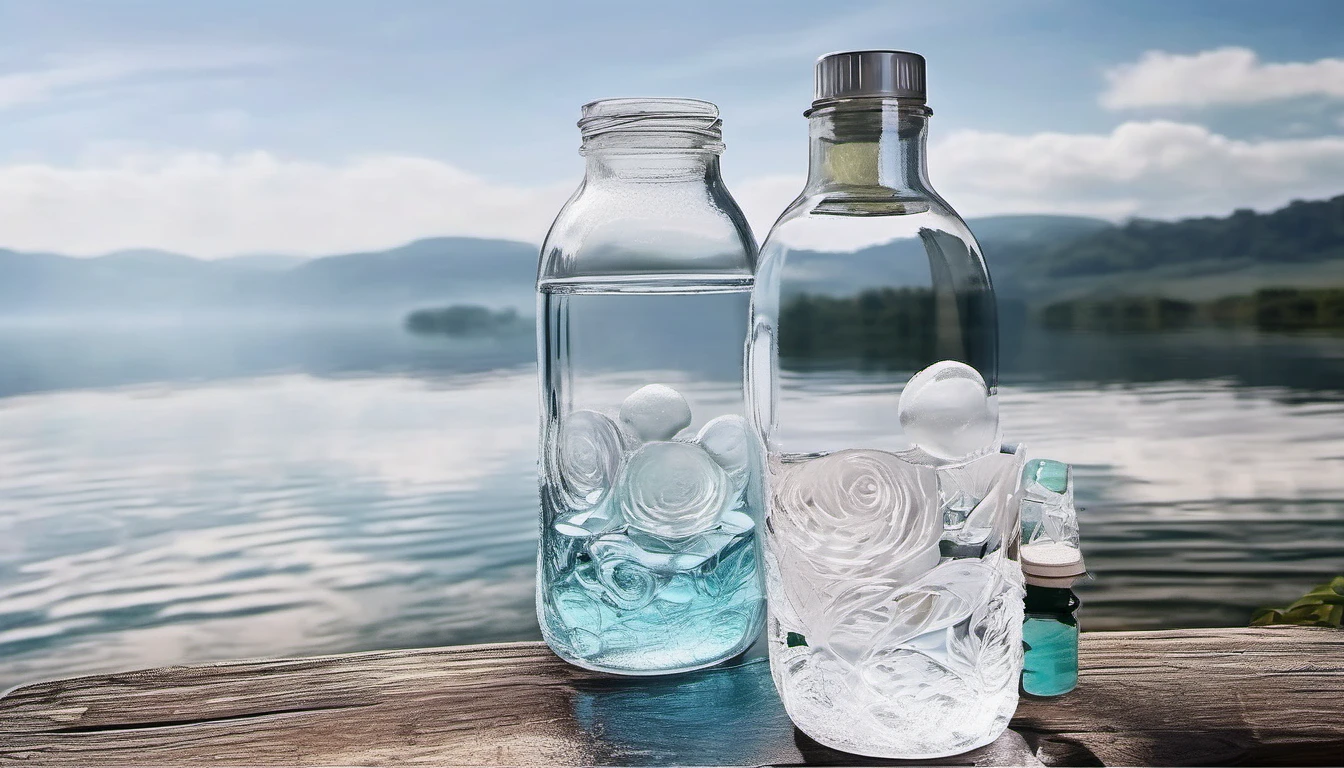Introduction: The Importance of Clean Drinking Water
Clean drinking water is essential for maintaining good health. It helps to flush out toxins, aids in digestion, and supports various bodily functions. However, many people may unknowingly be consuming contaminated water from their water bottles, putting their health at risk.
One of the common issues with water bottles is the growth of mold, which can have serious consequences if left unchecked. In this article, we will explore the dangers of mold in your water bottle, the health risks associated with it, and provide practical steps to prevent and remove mold from your water bottle.
Understanding the Dangers of Mold in Your Water Bottle
Mold is a type of fungus that can thrive in damp environments, including the moist conditions inside a water bottle. When mold grows in your water bottle, it can release spores and toxins that can be harmful if ingested. Exposure to mold-contaminated water can lead to a range of health issues, from mild irritation to more severe respiratory problems.
Health Risks Associated with Drinking Mold-Contaminated Water
Consuming water contaminated with mold can have several adverse health effects. Some of the common health risks include:
- Respiratory problems: Mold spores can trigger allergic reactions, asthma symptoms, and respiratory infections, particularly in individuals with weakened immune systems or pre-existing respiratory conditions.
- Gastrointestinal issues: Ingesting mold-contaminated water can lead to nausea, vomiting, diarrhea, and abdominal pain.
- Skin irritation: Exposure to mold can cause skin rashes, itching, and other skin-related problems.
- Neurological effects: In some cases, mold exposure has been linked to headaches, dizziness, and cognitive impairment.
- Weakened immune system: Prolonged exposure to mold can weaken the body’s immune system, making it more susceptible to other illnesses.
Signs and Symptoms of Mold in Your Water Bottle
Identifying the presence of mold in your water bottle is crucial to prevent further health risks. Some common signs and symptoms of mold in your water bottle include:
- Visible growth of fuzzy, discolored patches on the inside of the bottle or on the rubber seal
- A musty or unpleasant odor coming from the water bottle
- Slime or slimy residue on the inside of the bottle
- Discoloration or peeling of the water bottle’s label or sticker
If you notice any of these signs, it’s essential to take immediate action to clean and disinfect the water bottle to prevent further mold growth and potential health consequences.
How Mold Can Grow in Water Bottles

Mold can thrive in water bottles for several reasons. Some of the common factors that contribute to mold growth include:
- Moisture: Water bottles, especially those made of plastic or silicone, can retain moisture, creating an ideal environment for mold growth.
- Lack of cleaning: Failing to clean and dry water bottles thoroughly after each use can allow mold spores to accumulate and grow.
- Warm temperatures: Mold thrives in warm, humid environments, making water bottles left in hot cars or direct sunlight particularly susceptible to mold growth.
- Contamination: Introducing foreign objects, such as straws or lids, can transfer mold spores into the water bottle, leading to further growth.
- Damaged or worn materials: Over time, the rubber seals or plastic components of water bottles can become damaged, creating crevices where mold can take hold.
Steps to Remove Mold from Silicone Rubber Water Bottles
Silicone rubber water bottles can be particularly prone to mold growth due to their porous nature. If you have a silicone water bottle with mold, follow these steps to remove it:
- Disassemble the bottle: Take the bottle apart, removing any detachable parts, such as the lid, straw, or cap.
- Clean with vinegar: Mix equal parts white vinegar and water in a spray bottle. Spray the solution onto the affected areas and let it sit for 10-15 minutes before scrubbing with a soft-bristled brush.
- Sanitize with bleach: After cleaning with vinegar, mix a solution of 1 teaspoon of bleach per 1 cup of water. Soak the bottle and its parts in the bleach solution for 5-10 minutes to disinfect and kill any remaining mold.
- Rinse thoroughly: Rinse the bottle and its parts with clean water to remove any residual vinegar or bleach.
- Air dry: Allow the bottle and its parts to air dry completely before reassembling and using it again.
Safety Precautions for Drinking from Collapsed Plastic Water Bottles
Collapsed or dented plastic water bottles can also pose a health risk, as they may harbor bacteria and mold. When drinking from a collapsed plastic water bottle, it’s essential to take the following safety precautions:
- Inspect the bottle: Carefully examine the bottle for any signs of mold, discoloration, or other contaminants.
- Clean and disinfect: If the bottle appears clean, wash it thoroughly with hot, soapy water and rinse it well. You can also disinfect the bottle by soaking it in a solution of 1 teaspoon of bleach per 1 cup of water.
- Avoid direct contact: When drinking from a collapsed plastic bottle, try to avoid direct contact between your mouth and the bottle’s opening to minimize the risk of contamination.
- Replace the bottle: If the bottle is heavily damaged or you cannot thoroughly clean and disinfect it, it’s best to replace it with a new, undamaged water bottle.
Preventing Mold Growth and Sticker Peeling on Water Bottles
To prevent mold growth and sticker peeling on your water bottles, follow these tips:
- Clean regularly: Wash your water bottle with hot, soapy water and rinse it thoroughly after each use. This will help remove any residual moisture or contaminants that could lead to mold growth.
- Dry completely: Make sure to dry your water bottle completely, both inside and out, before storing it. You can use a clean, lint-free cloth or let it air dry.
- Avoid leaving in hot environments: Exposing your water bottle to high temperatures, such as in a hot car or direct sunlight, can promote mold growth and cause sticker peeling.
- Use sticker-resistant bottles: Consider investing in water bottles with sticker-resistant surfaces or those made of materials that are less prone to sticker peeling, such as stainless steel or glass.
- Replace damaged bottles: If your water bottle’s seal, cap, or other components become damaged, replace the bottle to prevent mold growth and ensure safe drinking.
Tips for Maintaining a Clean and Safe Water Bottle
To keep your water bottle clean and safe, follow these additional tips:
- Avoid sharing water bottles: Sharing water bottles can transfer bacteria and mold spores from one person to another.
- Rotate your water bottles: Use a variety of water bottles, and rotate them regularly to prevent the buildup of mold and bacteria.
- Store bottles properly: Keep your water bottles in a cool, dry place when not in use, and avoid storing them in damp environments.
- Consider using bottle brushes: Use a dedicated bottle brush with a long handle to thoroughly clean the interior of your water bottle, reaching all the nooks and crannies.
- Invest in a water bottle sanitizer: Some water bottle sanitizers use UV light or other methods to kill bacteria and mold, providing an extra layer of protection.
Conclusion: Prioritizing Clean Water for Better Health
Maintaining a clean and mold-free water bottle is crucial for your overall health and well-being. By understanding the dangers of mold in your water bottle, recognizing the signs of contamination, and taking proactive steps to prevent and remove mold, you can ensure that you are consuming safe, clean water every time.
Remember, your health is your most valuable asset, and taking the necessary precautions to protect it should be a top priority. Adopt these best practices for maintaining your water bottles, and enjoy the benefits of clean, refreshing water for a healthier you.To learn more about keeping your water bottles clean and safe, check out our comprehensive guide on https://byusawise.com/the-benefits-of-choosing-a-glass-water-bottle-for-a-healthier/. Discover additional tips and techniques to prevent mold growth, remove stains, and extend the life of your water bottles. Prioritize your health and hydration with our expert advice.



